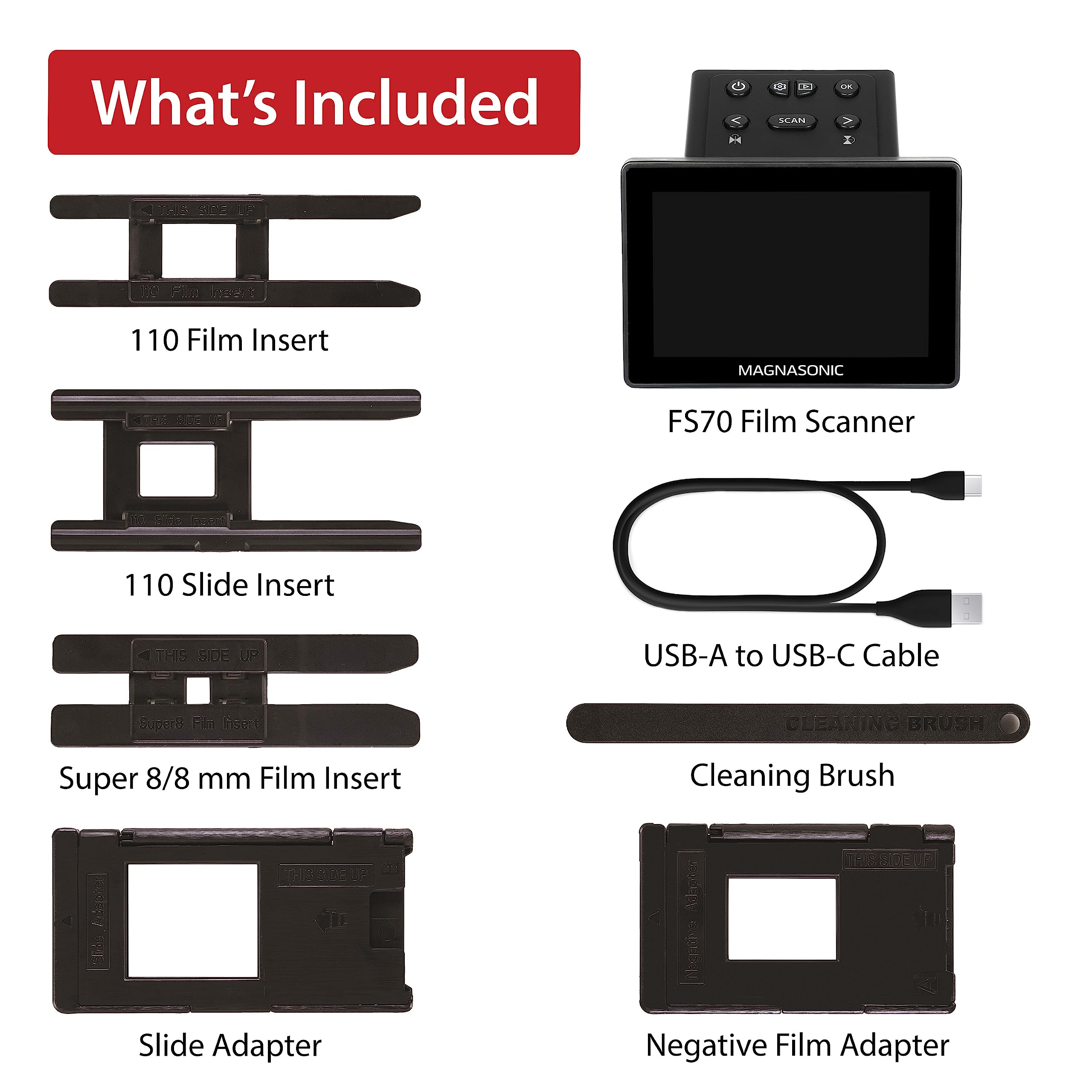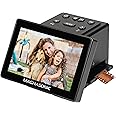A BRIEF HISTORYIn the early years as electronic imaging was catching on, the most practical way to convert film images to something digital was to use a flatbed scanner, such as the Epson V550 still being sold as of 12-2024. That system is ponderous, involving fiddly trays, a physically slow scan across the film, and prolonged processing time as those digitized images reach your desktop computer.But the image quality on a flatbed scanner can be scaled to suit your purpose, with higher resolution taking longer, making a bigger file size, and yielding excellent quality images. Or, you could dial back the quality and obtain an image more quickly, at a smaller file size that might prove adequate for web posting or emailing.More recently, products have come to market using an owner's high quality DSLR camera, adapted to essentially take a picture of the film image, thereby creating a digital file. If you have such a camera, great, because it's a faster way to accomplish the task, and the quality is considered on a par with flatbed scanning. All you have to buy is the box that fastens to the camera's lens. The unit holds the film and illuminates it as the camera takes a digital picture of it.But if you do NOT already have a high quality, purpose built digital camera (not a smartphone in other words), there would be a significant cost to expanding your photography in that direction.The Magnasonic is a small, desktop device, self-contained, that takes a digital picture of your film image and saves it to memory. The quality, however, is NOT as good as either method above. But it is a very fast way to obtain an adequate image that can be posted or emailed to someone.The practical resolution quality of this unit in this review is 13 megapixels, a number to compare with smartphones or digital cameras. There is no difference in quality when using this unit's "25MP" setting, although that selection creates a bigger image and a larger file size. As uploaded, the image on the left is 6112x4080 pixels at 4.7Mb file size, while the photo on the right is 4120x2752 pixels at 2.32Mb file size. If you download and zoom in, the detail is identical.The Magnasonic does not offer much in the way of adjustment for color and exposure. The images shown are right off a strip of Kodak Portra 800, shot at 400, uncorrected for color, but with exposure dropped by 2EV units to preserve highlights. I was able to improve upon color balance, brightness, and contrast after I moved the image to a desktop computer that has photo software. There is no provision to "crop" or zoom in on the existing film image, and no advantage to sliding the physical film left or right to improve the framing.This unit has a slot for an SD-type memory card, and you will need it. The internal memory can hold only 8 images on a film roll which is usually 24 or 36 frames. Also, it is easier to pull the high capacity memory card when you're done and move it to your computer, than it would be to utilize the USB cable and connection on the Magnasonic to extract images from its internal memory.As long as you can work within these limitations, this is a handy unit to quickly take a roll of film to digitize and send around to friends and family. Exceptionally good photos could later be scanned with other equipment at higher quality.Although one purpose of a unit like this is to archive old family photos taken years ago, another purpose serves present-day film photography. There's nothing quite like the experience of film, especially when educating yourself with an all-manual camera that requires you to think about shutter speed, framing, focus, shutter speed, and film type. Sharing the results, by using a unit like this, is an enjoyable & worthwhile pursuit. Product is RECOMMENDED.
























